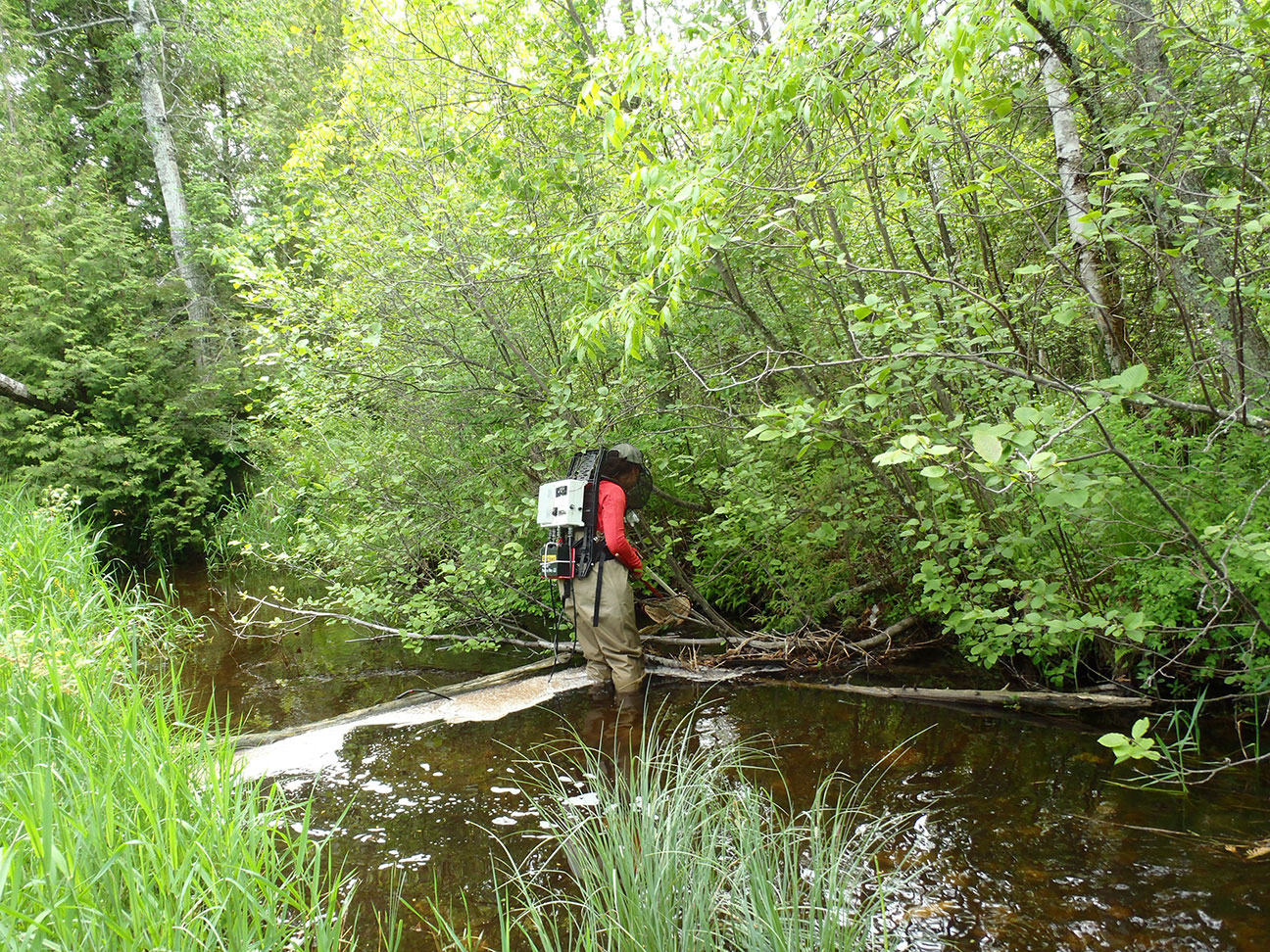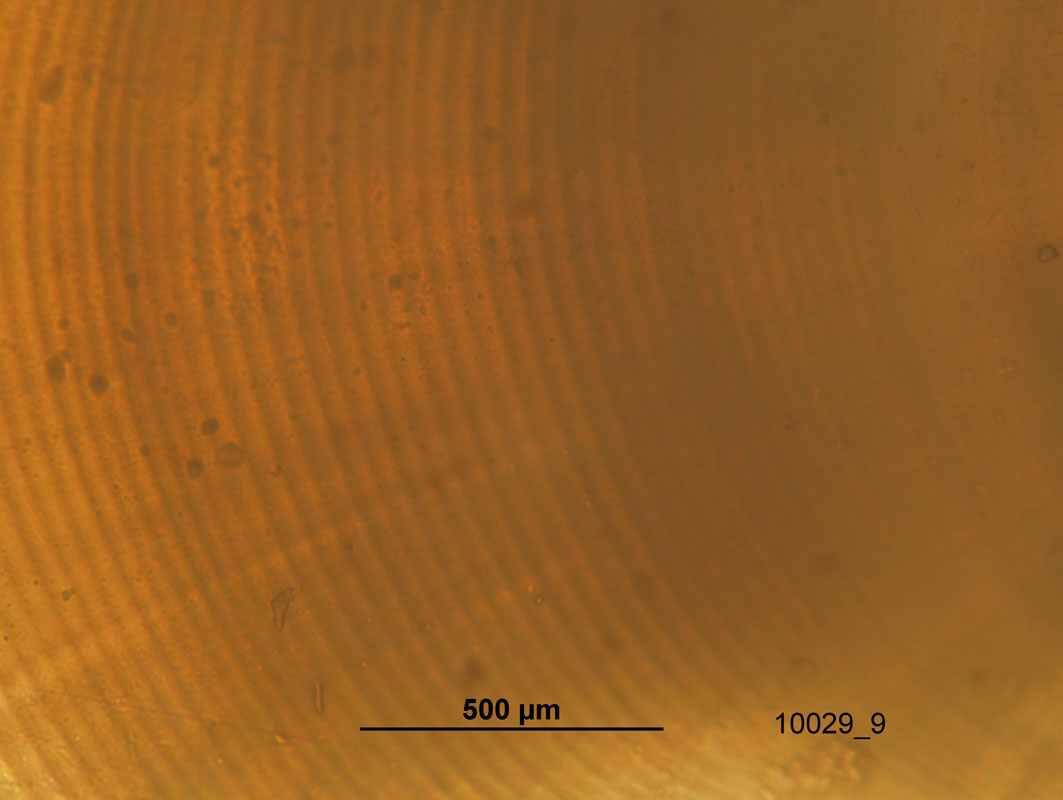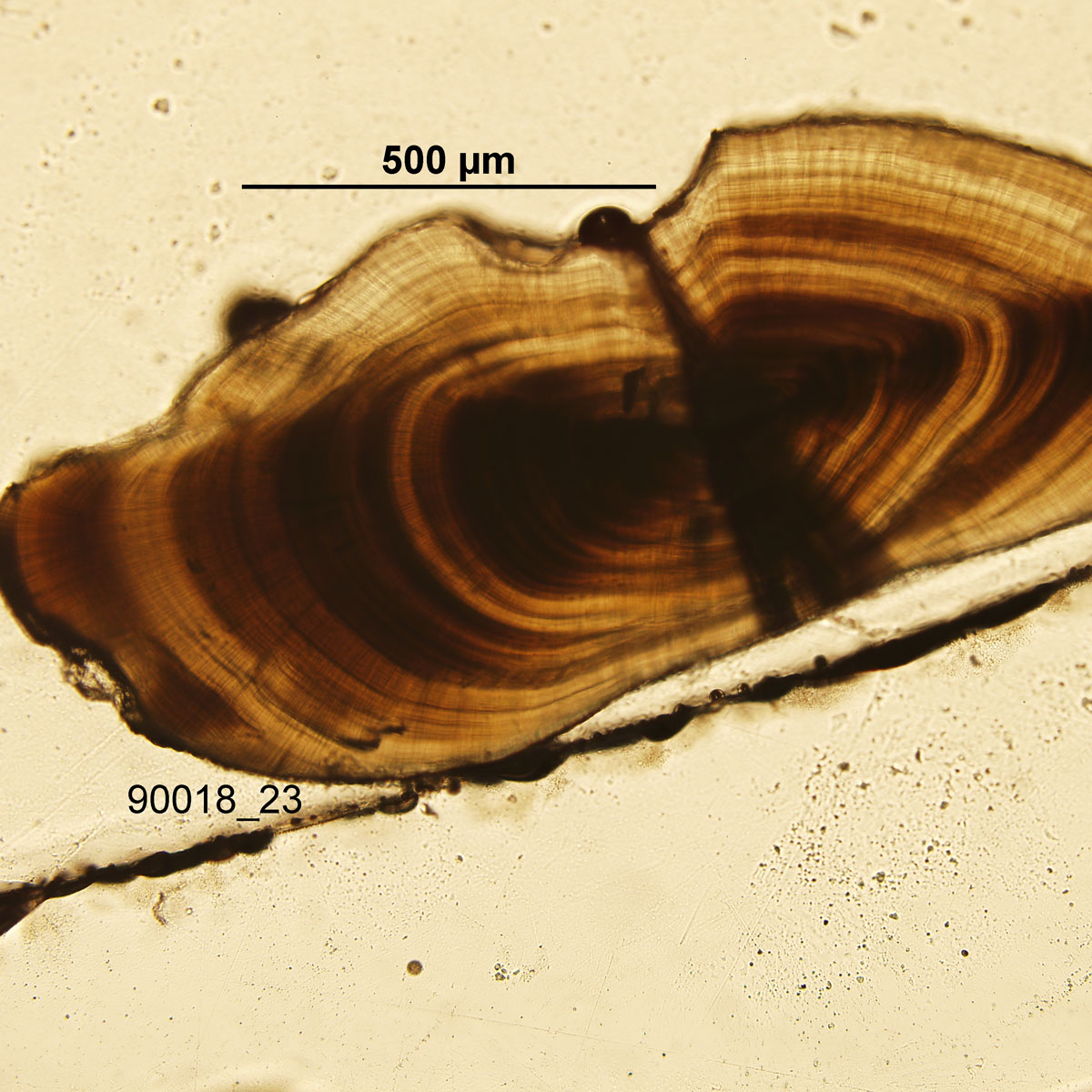Laurentian Great Lakes steelhead are a complex stock of fish. The population is a mixture of hatchery-released and wild, naturally reproduced fish originating from many different streams. Knowing the natal streams of the fish is important to best managing this species, as it allows for targeted conservation and management to the areas that are the major contributors to the total lake population. Fortunately, we may be able to determine the natal stream of a fish by looking at its otolith.

Sagittae Otolith on the tip of my gloved index finger
Otoliths are the ear bones of a fish. They are commonly referred to as “lucky stones.” As early as the egg stage, a fish begins to form the largest of the three pairs of otoliths, called the sagittae. The two smaller pairs of otoliths form near the time of hatching and are called the lapilli and asterisci. Fish accumulate material on their otoliths daily and also exhibit yearly growth patterns, similar to the pattern seen in tree rings. However, the ring pattern on an otolith can be visualized best if you picture it as the layers of an onion since the layers form concentrically around the core. The otolith is considered to be metabolically inert, meaning that once the material has been accumulated on the structure it will never be reabsorbed into the body. Subsequently, the otolith acts as a journal containing the entire life history of a fish from egg until death.

How does this help us to determine the natal stream of the fish? There are a few pathways for elements to be incorporated into the otolith of a fish. The primary pathway is through the water. When a fish is filtering water through its gills, some of the elements in the water are taken up into the bloodstream of the fish. Various elements can then be incorporated into the crystalline structure of the otolith. In the Lake Michigan watershed, many of the natal streams have unique water chemistry influenced by surficial geology, bedrock geology, and hydrology. Since water is the primary pathway of elemental uptake, a unique water chemistry in a stream will result in a unique otolith chemical signature for fish in that stream.

Electro fishing for juvenile steelhead
Once the otolith is removed from the fish, dried, sectioned, and polished, a chemical analysis can be performed through the use of laser-ablation inductively coupled plasma mass spectrometry (LA-ICP-MS). In other words, a laser is used to precisely remove minute particles of the otolith. The otolith “dust” is instantaneously removed from the ablation chamber and carried in helium and argon gas to the mass spectrometer where it is transformed into an ionic plasma. This plasma is then sorted by element mass and quantified to obtain the chemical signature of the otolith at different stages during its life history.

Daily growth rings of an Otolith
My current research seeks to determine if otolith signatures can be used to determine the natal streams of steelhead. The work represents a collaborative effort between Central Michigan University and Michigan Department of Natural Resources and is funded by the Great Lakes Fishery Trust. The long-term goal of the project is to determine the natal origin of adult fish. In order to reach the long-term goal, we must first look into the utility of otolith chemistry to determine the natal origins of juvenile fish of known origin. To do so, I collect juvenile fish from 46 different sampling sites within the Lake Michigan basin in both spring and fall. Spring sampling targets fish hatched out the previous year, referred to as year-one-and-older (YOAO). Fall sampling targets fish hatched out in the current year, referred to as young-of-year (YOY). This represents a comprehensive sampling of the basin targeting the primary contributors to the lake population and the major watersheds.

So far, we have found that strontium (Sr) and barium (Ba) are the elements of greatest importance in distinguishing different otolith signatures. Streams in the basin have different levels of strontium and barium allowing for the otolith signatures to be used to determine the stream of origin. To obtain our results, we take a group of fish whose origins are known and run a computer analysis to determine the accuracy at which we can classify the fish back to their correct natal streams compared to otolith signatures from across the region. Our preliminary results are promising.
Our statistical results have proved useful for discriminating fish at both the individual stream and regional level with relatively high accuracy. With continued study, we should even be able to classify select fish caught in Lake Michigan to specific natal streams. Hatchery fish also have very unique otolith signatures and can be classified back to their hatchery of origin.
Through our preliminary analysis we have shown that otolith chemistry can be used to classify fish to their natal streams. Our high accuracy sites are known producers of wild, naturally reproducing fish. As our data base for the otolith signatures increases, we believe that our accuracy will improve. The results of this research paves the way in determining the natal origins and success of adult fish and allows for more effective conservation and management of steelhead themselves and their natal habitats.
